There is a trend in German radio to minimize or even completely avoid any sound design, to be listener friendly in an over-advertised world. What’s the effect on a radio brand?
Station imaging – how much should it be? was an interesting session at the recent Tutzinger Radiotage. Radio consultant Sascha Baron discussed the why and how of sound design. The lesson learned: although ‘only’ subconsciously absorbed, station imaging is important for radio, if it’s used functionally to improve the program and enhance the flow.
Radio imaging reinforces formatics
Baron defines radio imaging as “all acoustic elements of the program that are not part of the music”, such as: jingle idents, music beds, and anything that involves the station voice. Program content and acoustic design are the 2 things that make your station sound different from others. Station imaging creates a perception, meaning that listeners see a station as being old, young, serious, or cool. It reinforces all aspects of the radio format, builds images, and highlights USPs. “I can play music from the eighties, but when I don’t say that I do, people usually don’t realize it. They either like the music, or they don’t.”
Why use station imaging?
Sacha Baron mentions 8 reasons to use radio imaging and sound design on the air:
- Creates good program flow and rhythm
- Provides listener orientation and structure
- Identifies radio brand (recognizable musical logo)
- Makes station tangible (adds emotional component)
- Establishes brand perception (cool, serious, personal, distant)
- Builds radio station images (best music, funniest comedy, local news)
- Communicates station benchmarks (new music, cult hit, current promotion)
Station sound heard subliminally
Interesting is that for the most part, radio production is actually not consciously heard by listeners. Station imaging communicates subconsciously and emotionally more than consciously and rationally. Radio production plays an important role in the overall listening experience. It’s substantial because almost every link includes a sound design element, and all parts of the station’s jingle package and promos include the sound color (sometimes with a distinctive logo melody) of the brand.
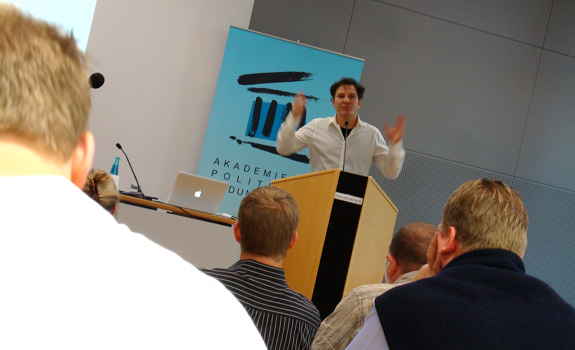
German radio consultant Sascha Baron: “Positioning statements are completely overrated” (photo: Thomas Giger)
Remarkable positioning doesn’t work
Some radio consultants like unusual positioners, because they assume that these will be more noticed and remembered. Sascha Baron has a refreshing opinion: “I think that positioning statements are completely overrated. SWR3 once used the claim Mehr Hits, mehr Kicks (more hits, more kicks) which ran for 5 years. Then there was a survey to ask listeners what SWR3 stood for. No one knew it! Maybe 5 or 6 percent.”
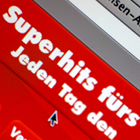 Positioning statements affect ratings?
Positioning statements affect ratings?
Someone in the audience adds that positioners often make the truth look better (“When stations claim that they have more variety, they often don’t…”) and that positioning statements are sometimes used to increase ratings in survey periods. He suspects that popular tag lines like Jeden Tag, den ganzen Tag (every day, the whole day) are there to let people think that they listen to a station all the time. It may help to artificially increase Time Spent Listening.
Jingles should not interrupt
Radio content is heard incidentally and station imaging is received subliminally. Baron: “Sometimes we don’t even hear the news consciously, but when the announcer makes a mistake while he’s reading, we notice it immediately.” The same applies to transitions from one song to another, and therefore music sweeps should be free of unexpected interruptions. In other words, do not disturb in the middle of the flow.
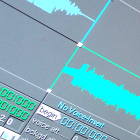 Radio imaging needs flow
Radio imaging needs flow
The consultant thinks that jingle & imaging production companies should always be aware of how stations use sound design. A common problem is when elements end with lots of melody and instrumentation. “I then have to wait until the very end before I can start the next element.” The reason why he prefers voice drops and other non-musical imaging, based on speech. “Dry elements can be put on the intro of the following song and create flow.”
Aircheck Die NEUE 107.7
[audio:http://www.radioiloveit.com/wp-content/uploads/radio-aircheck-germany-die-neue-1077-tutzinger-radiotage-2011.mp3|titles=Die Neue 107.7 Germany (radio aircheck)]
Die NEUE 107.7 | Music sweep | Station identification in between every song
- Song
- Basic ID ‘Die Neue 107.7 – Bester Rock & Pop’ (sung jingle & spoken tag)
- Song
- Sweeper ‘Die Neue 107.7’ (spoken)
- Song
- Shotgun ID ‘Die Neue 107.7’ (sung jingle)
- Song
Jingles outside music sweeps
In Baron’s opinion, the middle link is better than the first and last, where a sung jingle is being used. “This slows down and does exactly the opposite of what it should; enhancing the program flow.” It puzzles him why so many radio stations still use sung jingles inside the music flow, but he adds that “it’s also a matter of taste and it depends on the target audience. For older listeners, sung elements are more traditional.”
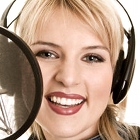 Natural station voice trend
Natural station voice trend
German station voices are usually actors or professional narrators, mostly dubbing movies and doing commercials. “The problem is that voice overs often sound selling which could be perceived as negative.” According to Sascha Baron, HIT RADIO FFH in Hessen was being perceived as “distant” in the past, also because of the classic, older, deep male voice they used. They now have a more ‘natural’ station voice. It seems like this is a current trend.
Aircheck 98.8 KISS FM
[audio:http://www.radioiloveit.com/wp-content/uploads/radio-aircheck-germany-kiss-fm-tutzinger-radiotage-2011.mp3|titles=98.8 KISS FM Germany (radio aircheck)]
98.8 KISS FM | TOTH sequence | Long segment full of station imaging
- Headlines into news
- News (has been edited)
- Service weather & traffic update
- Jock-talk teasing things coming up
- Promo for iPhone giveaway promotion
- Commercial advertising break (has been edited)
- Top of the Hour including ‘KISS Nation’ listener testimonial
- First song of hour… finally :-)
KISS FM inspired by… KIIS-FM?
I would not surprise me if 98.8 KISS FM Berlin is clearly inspired by American equivalents. The delivery style and audio processing are similar to the ones of Kelly Doherty, producer and station voice of 102.7 KIIS-FM (and also female V/O of Z100 and many other stations all over the world). Sascha Baron perceives the KISS sound as “very young, very cool, and almost arrogant”. The strongest point for him is that “you don’t know where the station imaging begins or ends, and that’s a compliment for sound design.” He thinks that, for their young audience, Berlin’s 98.8 KISS FM does “a good job”.
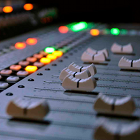 Minimalistic station imaging tactics
Minimalistic station imaging tactics
Baron is not a fan of music beds if they’re only there to tell the listener: “Sorry that we talk, there will be more music soon. I think it is not consequent. Either have something to say; so people will listen, or say nothing at all.” While some radio stations minimize sound design, a few others avoid it completely. They assume that today’s audience is tired of commercials, promotions and contests – and therefore removed all imaging. The exact opposite of KISS…
Aircheck ANTENNE 1
[audio:http://www.radioiloveit.com/wp-content/uploads/radio-aircheck-germany-antenne-1-tutzinger-radiotage-2011.mp3|titles=ANTENNE 1 Germany (radio aircheck)]
ANTENNE 1 | Service & feature | Long segment without any station imaging
- Song back announce
- Traffic situation update
- Introduction political news feature
- Cross-talk with reporter about this topic
- Pre-sells (hook teasing) of 2 following songs
- Sounder leading into commercials
- Break (has been edited)
Radio programming strategies matter
Sascha Baron observes that “it has no life” because listeners “can’t touch” anything here. In his opinion, sound design is functional when you switch from one program element to another. “When I have traffic info, I want to announce it; when I have different topics within the same link, I wish to separate them.” He suggests that leaving out all station imaging is not the best way to avoid that listeners become irritated. “This is not your only goal.” Important parts of a programming strategy, like station branding, positioning and promotions, are often communicated through on-air imaging.
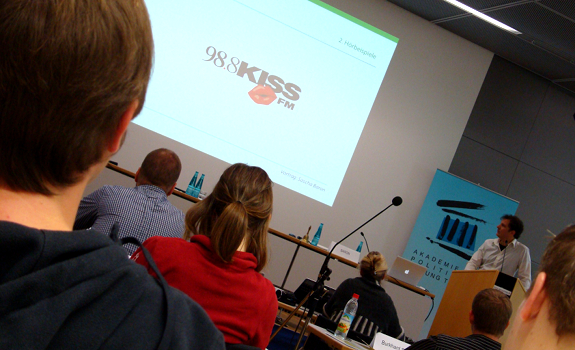
Sascha Baron: good sound design is when “you don’t know where the imaging begins or ends” (photo: Thomas Giger)
Listener friendly on-air self-promotion
How to keep sound design, but avoid listener irritation? You could find a compromise and:
- reduce the number of elements
- limit the perceived impact of radio imaging
- let your station voice be personal instead of ‘selling’
- include only light sounding instruments in compositions
- use in music sweeps more short spoken elements than long sung jingles
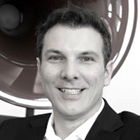 About
About
Sascha Baron has 15 years experience working in radio. He studied radio journalism and worked in leading positions in morning show production and on-air promotion. Baron’s track record includes many public, state funded radio stations such as SWR1, SWR3, SR1 Europawelle and Deutsche Welle. He was also chief editor and deputy PD at private station Radio Regenbogen. Sascha Baron consults several radio brands in Germany and can be contacted here.





Thank you for your very kind words! It’s our pleasure to share things with radio people like you. (And sorry for the late reply, due to holidays and all.) Have a great day!
This piece is inspiring. It answers questions that have been disturbing me. Thank you God bless you for your positive words of wisdom.